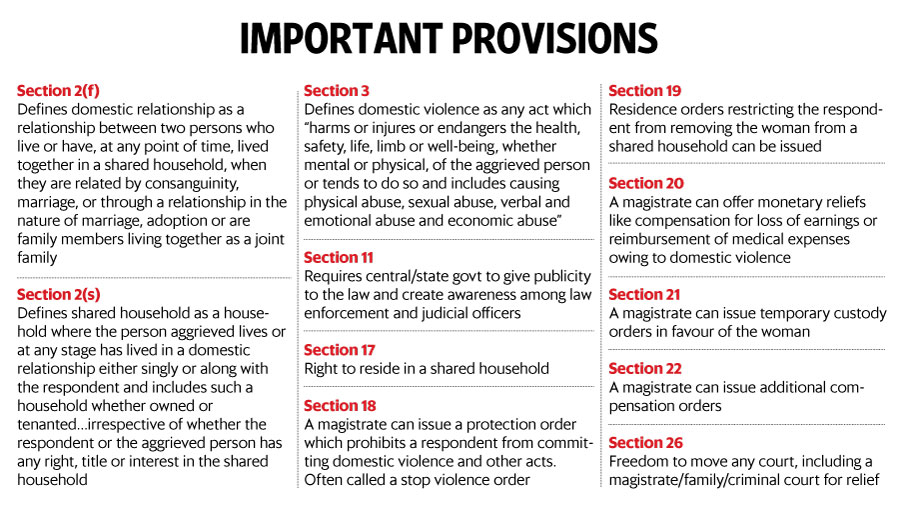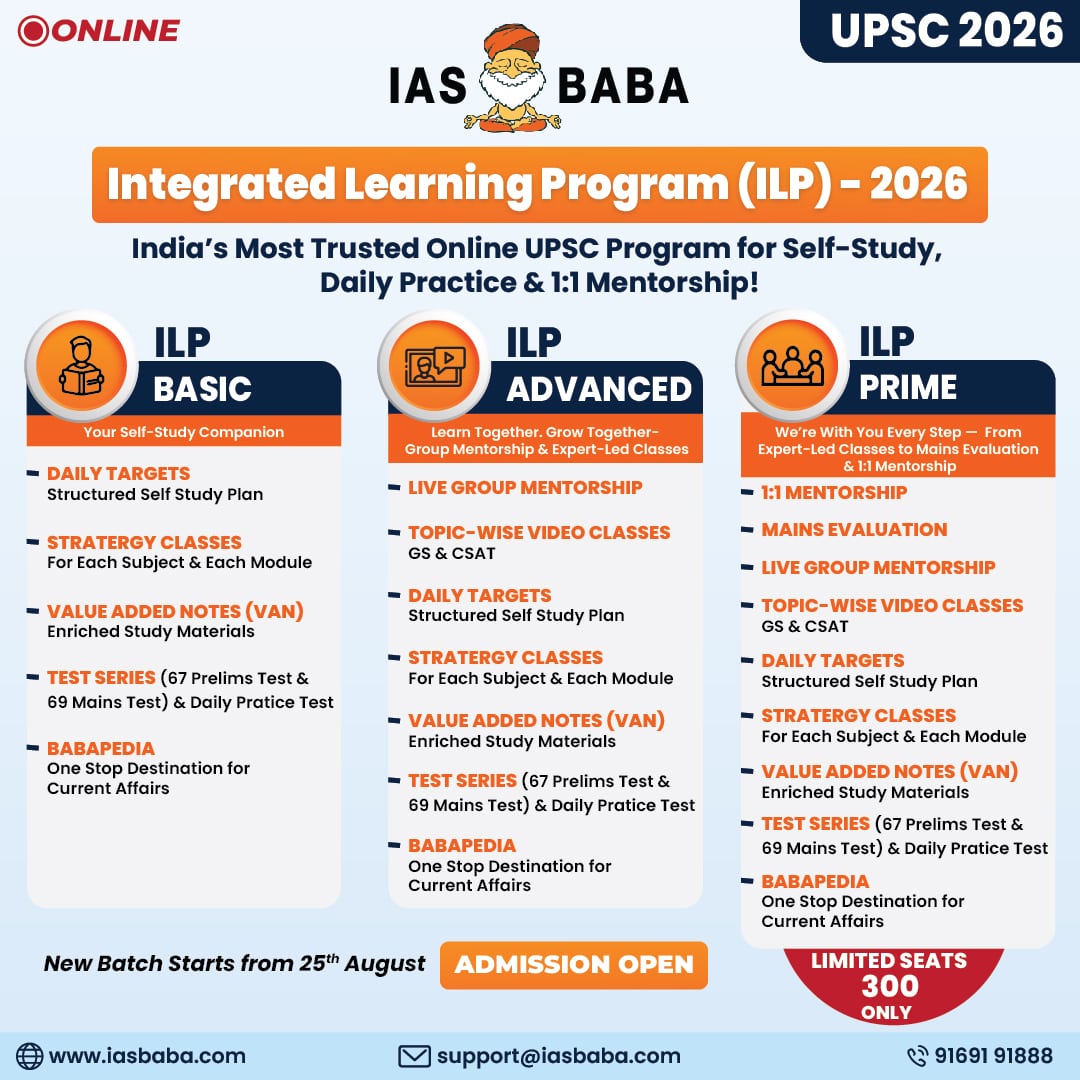IASbaba's Daily Current Affairs Analysis, IASbaba's Daily Current Affairs Oct 2016, National, UPSC
Archives
IASbaba’s Daily Current Affairs – 29th October, 2016
NATIONAL
TOPIC:
General Studies 1
- Social empowerment
General Studies 2
- Government policies and interventions for development in various sectors and issues arising out of their design and implementation.
- Welfare schemes for vulnerable sections of the population by the Centre and States and the performance of these schemes.
Ten years of Domestic Violence Act- What is the progress?
The Protection of Women from Domestic Violence Act (PWDVA) 2005 is a landmark legislation to protect and grant relief to victims of domestic violence. Let us take a look at how is it faring.
Background:
- The PWDVA is first of its kind law in India which came into force on 26th October 2006. For the first time, a law dealt with private spaces of individuals—something the law had avoided doing until then—although selectively.
- The function of the law was simple- address violence against women within the home.
- It had a broad definition of ‘domestic relationship’ which included married women, mothers, daughters and sisters.
- It is acknowledged that domestic violence is ‘widely prevalent but it has remained largely invisible in the public domain’.
- It is a civil law aimed at providing a fourfold support system to women who have suffered violence at home
- Residence orders
- Custody orders
- Protection orders
- Monetary relief from a respondent
- Before PWDVA, women could only seek recourse under the Indian Penal Code (IPC)—sections 304B (dowry death) and 498A (cruelty by husband or his relative).
- The right to reside in a shared household, provided by the law, was considered a huge step towards empowering women, especially in a society where women often do not own property.
- PWDVA enshrines principles of the Convention on the Elimination of All forms of Discrimination Against Women (CEDAW). This convention was ratified by India in 1993.
- CEDAW’s 12th general recommendation required “the States parties to act to protect women against violence of any kind occurring within the family, at the work place or in any other area of social life”.

Picture credit: http://www.livemint.com/r/LiveMint/Period2/2016/10/28/Photos/Processed/g_DV_2_web.jpg
Domestic Violence definition
- PWDVA defined domestic violence for the first time and it did not restrict itself to physical violence, hence kept up with international definitions.
- It includes physical abuse (which is more identifiable and is easier to prove), emotional and sexual abuse. Threat is also included as a part of violence. Thus, such broad definition was a major breakthrough in protecting women against domestic violence.
- Significantly, PWDVA recognizes sexual violence within the confines of marriage- Marital rape is an exception to rape under IPC but PWDVA can come to the rescue of these women through protection orders or orders to stop violence.
Impact of law
- Despite such extensive definitions and provisions, the impact of law has not been remarkable.
- It has been noted in many orders under PWDVA that they do not specifically mention the category of sexual abuse even when alleged.
- Not much has changed in 10 years in terms of awareness within the law enforcement agencies and the lower judiciary.
- Many believe that law in spirit has not been implemented. Though the law is useful, the states have failed in enforcement.
- Also, the judiciary still has a long way to go as despite progressive law as the judicial attitudes are still steeped in patriarchal norms. The judicial narrative on women’s rights within marriage in India has been woefully restricted to ‘lawful’ wives with little or no attention paid to other women in non-marital relationships.
- However, the SC has made significant changes in the law such as:
- A wife would be considered an aggrieved person under PWDVA even if she was judicially separated from her husband.
- ‘Adult male’ is struck down from the definition of respondent. It means that wives or women in relationships akin to marriages can take legal action against female relatives of their husbands under PWDVA.
Data from reports
A 2014 study by the United Nations Population Fund and the International Center for Research on Women:
- 60% of men reported using some form of violence—physical, economic, emotional or sexual—against their wife or partner.
- Emotional violence had the highest prevalence, with 41% of men admitting that they had used it at some point on their wives or partners.
National Crime Records Bureau
- It introduced a category of offences under PWDVA.
- In 2014, there were 426 cases which increased to 461 in 2015.
- There were 7,634 reported cases of dowry deaths and 113,403 incidents of cruelty against a woman by her husband or his relatives in 2015.
Conclusion
- From accounts across the board, it is clear that the progress on the law from 2006 to 2016 has been slow.
- Though it does not mean that all that had been expected from the law has not been achieved yet.
- When the law was passed, it was very futuristic and ahead of time as it sought to collapse the gap between civil and criminal law.
- Also, it sought to move away from the adversarial system of justice and the judge was expected to have more of a role in an inquiry with the help of protection officers. When this will be done, the victim will get timely justice which has not been possible in most of the cases till now.
- The state government has to prepare a cadre of professionally qualified well-paid protection officers who could do the kind of outreach work that is required to be done for a woman in distress. The protection officers have to be allowed to play their role in being the eyes and ears of the court.
- The rights of women and dignity of women needs to be protected for her empowerment and thus, this law has to be implemented with utmost sincerity by the state.
Connecting the dots:
- Despite a well framed law of protection of women against domestic violence, the law has not been effective in its impact. Explain the causes and suggest way forward.
- Violence against women is now taking a dangerous turn with physical abuse not only being one of the medium. Discuss the role of state in protecting the women and her dignity.
MUST READ
Extending food security
Centre is trying to decimate judiciary: SC
Save us from the patriots
It’s still a grim fight against HIV
Only holistic intervention ‘can get 22GW plants going’












